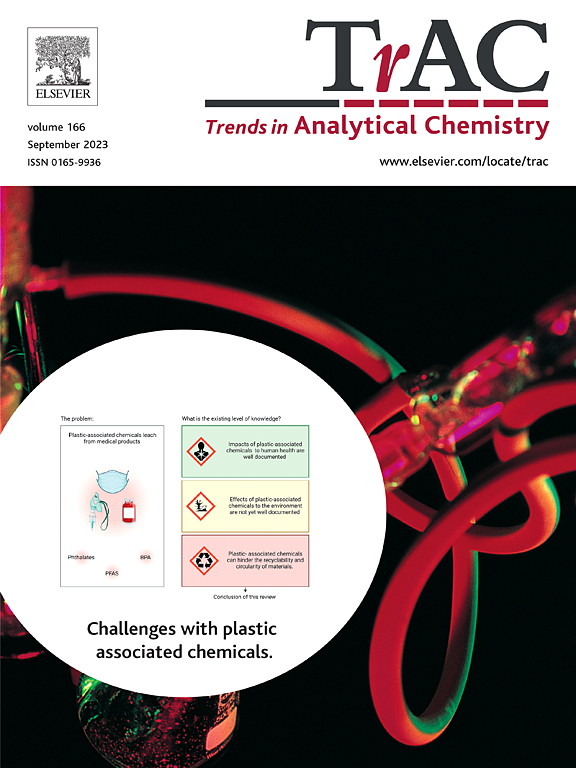Recent developments of small-molecule fluorescent probes for the detection of hydroxyl radical in biological systems
IF 11.8
1区 化学
Q1 CHEMISTRY, ANALYTICAL
引用次数: 0
Abstract
Intracellular reactive oxygen species are mainly produced from oxygen through electron-transfer reactions, which diffusely discovered in biological organisms. Among them, hydroxyl radical (•OH) embodies crucial physiological functions and roles. However, the over-whelming of •OH are associated with various oxidative stress-related pathophysiological disorders, such as inflammation, liver injury, depression, and cancer. Nevertheless, some exact pathogenic traits of •OH in biological systems remain unknown because of its high reactivity, short half-life, and low concentrations. To better grasp the characteristics of •OH in physiological and pathological processes, it is crucial to develop highly sensitive and selective detection tools. Thus, small-molecule fluorescent probes have proven to be useful tools for in situ and real-time monitoring of variations in reactive species in living systems, owing to their high spatiotemporal resolution, noninvasiveness, high sensitivity, and high selectivity. In this regard, this review discusses high-performance molecular probes for monitoring •OH fluctuations and studying the relevant mechanisms in living systems. We expect that this review will provide a comprehensive introduction to •OH-responsive fluorescent probes and their further applications in biomedical and clinical fields.
求助全文
约1分钟内获得全文
求助全文
来源期刊

Trends in Analytical Chemistry
化学-分析化学
CiteScore
20.00
自引率
4.60%
发文量
257
审稿时长
3.4 months
期刊介绍:
TrAC publishes succinct and critical overviews of recent advancements in analytical chemistry, designed to assist analytical chemists and other users of analytical techniques. These reviews offer excellent, up-to-date, and timely coverage of various topics within analytical chemistry. Encompassing areas such as analytical instrumentation, biomedical analysis, biomolecular analysis, biosensors, chemical analysis, chemometrics, clinical chemistry, drug discovery, environmental analysis and monitoring, food analysis, forensic science, laboratory automation, materials science, metabolomics, pesticide-residue analysis, pharmaceutical analysis, proteomics, surface science, and water analysis and monitoring, these critical reviews provide comprehensive insights for practitioners in the field.
 求助内容:
求助内容: 应助结果提醒方式:
应助结果提醒方式:


